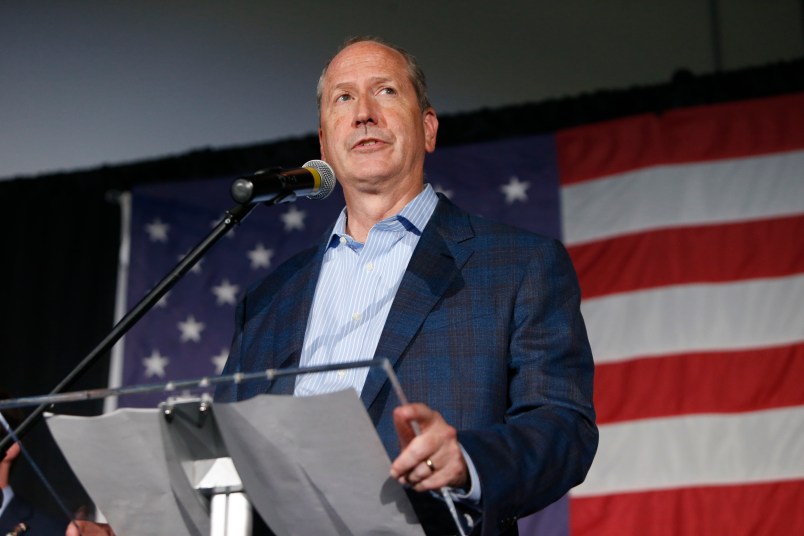Republican Dan Bishop squeaked by in the North Carolina 9th District special election Tuesday, winning by 2 points a district that President Donald Trump carried by 12 in 2016.
Bishop got 50.7 percent of the vote to Democrat Dan McCready’s 48.7.
Though the likes of President Donald Trump are already crowing over the victory, it does not allay Republicans’ fears for future elections.
According to the New York Times, McCready actually outperformed in the suburbs of Charlotte as compared to his 2018 race, a theme continued from Democrats’ domination in the midterms.
Though Bishop handily dominated the rural areas, the results show that Republicans’ — and, by extension, Trump’s — clout among suburbanites continues to slip.
Tuesday night concluded an election that has been raging, in some form, for two years after the first iteration of the election was tossed due to alleged absentee ballot fraud conducted by a Republican operative.
That operative, McCrae Dowless, who worked on the campaign of Republican Mark Harris, has since been indicted by a grand jury.
McCready had the name recognition and fundraising edge going into the new election for the seat, but outside groups poured in millions to push Bishop over the finish line.







What’s the bet they’re so arrogant they stole it again? I’d say even.
My kingdom for an accountant.
This is an unsurprising result, but still a bit disappointing.
It’s still a good sign for 2020 though… the GOP had to spend a lot of money to eke out a narrow victory for a seat that was previously R+12, so we’re talking about a nearly 10 point swing towards the Democrats. If that pattern holds, 2020 should be a pretty good year.
After reading various articles lately where moderate Republicans interviewed were going for McCready, I wouldn’t be shocked if they put their finger on the scale again.
This was a VERY weak win for the GOP. The district is still very gerrymandered. This was a special election which almost always skew conservative. Democrats have always had difficulty getting very large numbers of our people to the polls during off-year (and special) elections. The numbers tell us a good story. The wave is still there. Two years from now when the maps are drawn more fairly, this should be ours.